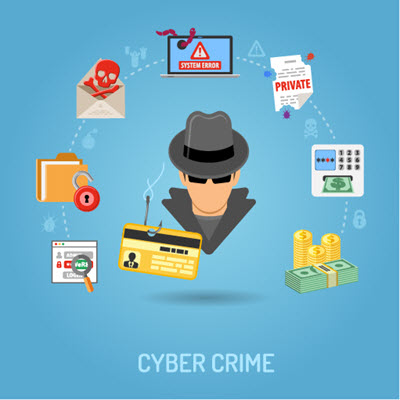Cyber Resources: Protect yourself this tax season

Tax Season has officially arrived, and your 2016 W-2 Forms have been mailed to your home address. Please be sure to check your mailbox daily to ensure your forms and personal information do not fall into the wrong hands.
Last year as of March 5, 2016, the IRS had identified 42,148 tax returns with $227 million claimed in fraudulent refunds. The IRS also identified approximately 35,000 fraudulent e-filed tax returns and 741 paper tax returns as of February 29, 2016. The IRS identified and confirmed 31,578 fraudulent tax returns involving identity theft as of February 29, 2016. As you can see from these statistics, people who steal your information and mail do not waste any time to file fraudulent claims.
Preventing mail theft
The US Postal Inspector’s website offers tips on how to prevent mail theft and information on how to report it.
Preventing identity theft
We live in an age where we cannot take our privacy for granted and just as we figure out one scam another is created. The only way to protect your personal information is to be proactive and consistent. By taking steps now, you can avoid a great deal of frustration later.
- Read your credit card, bank, and pay statements carefully each month. Look for unusual or unexpected transactions. Remember also to review recurring bill charges and other important personal account information. Most banks offer extra layers of protection when accessing your information by phone or online.
- Check to make sure your address on file with Essex is correct. You can easily do this by logging into Ultipro and checking your personal info.
- Notify your local post office when you move and whenever you are going to be away for an extended period. Also check periodically that your address has not been changed without your knowledge.
- Review your health insurance plan statements and claims. Look for unusual or unexpected transactions.
- Shred it! Shred any documents with personal, financial, or medical information before you throw them away.
- Take advantage of free annual credit reports. In the US, the three major credit reporting agencies provide a free credit report once a year upon request.
- If a request for your personal info doesn’t feel right, do not feel obligated to respond! Legitimate companies won’t ask for personal information such as your social security number, password, or account number in a pop-up ad, e-mail, text, or unsolicited phone call.
- Limit the personal information you share on social media. Also, check your privacy settings every time you update an application or operating system (or at least every few months).
- Put a password on it. Protect your online accounts and mobile devices with strong, unique passwords or passphrases.
- Limit use of public Wi-Fi. Be careful when using free Wi-Fi, which may not be secure. Consider waiting to access online banking information or other sensitive accounts until you are at home.
- Secure your devices. Encrypt your hard drive, use a VPN, and ensure that your systems, apps, antivirus software, and plug-ins are up-to-date.
If you become a victim of identity theft:
- File a report with the US Federal Trade Commission at IdentityTheft.gov.
- Use the identity theft report to file a police report. Make sure you keep a copy of both reports in a safe place.
- Flag your credit reports by contacting the fraud departments of any one of the three major credit bureaus: Equifax (800-525-6285), Experian (888-397-3742), or TransUnion (800-680-7289).
Related Reading
For more news on 2016 W-2 statements, check out these Buzz articles:
Identity Theft Protection: 2016 W-2 Verification Code
Access 2016 W-2 Statements in UltiPro
Monday, January 30, 2017 - 11:30